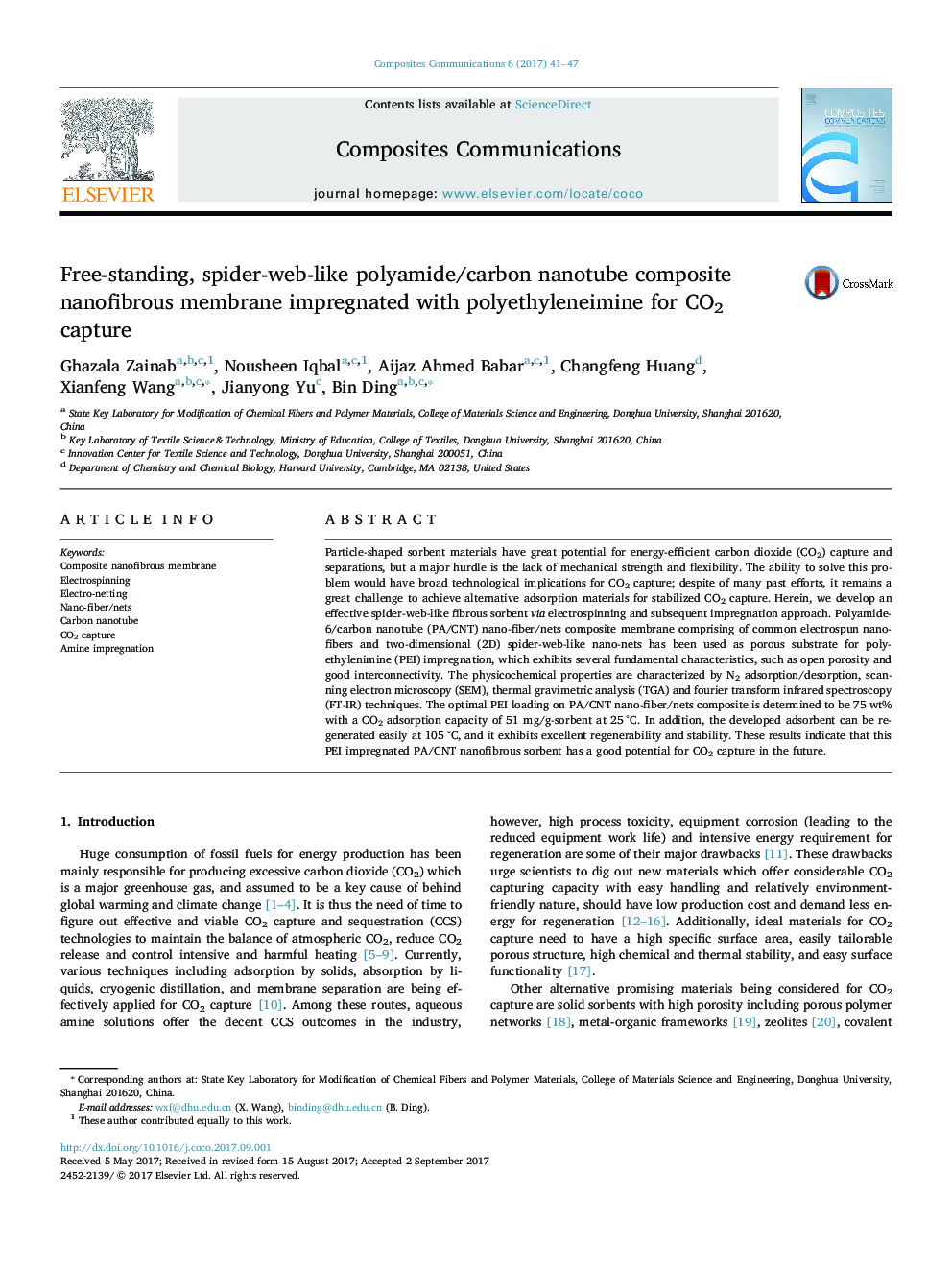| Article ID | Journal | Published Year | Pages | File Type |
|---|---|---|---|---|
| 5432787 | Composites Communications | 2017 | 7 Pages |
â¢PA/CNT membranes shows spider-web-like fibrous structure via electrospinning/netting and subsequent impregnation approach.â¢Pure PA/CNT membranes offered 3D fibrous structure having an average fiber diameter of 153 nm.â¢The PA/CNT-75-PEI has the highest adsorption capacity of 51 mg/g at 25 °C and 1 bar.â¢The PEI-loaded PA/CNT exhibited excellent regenerability and stability.
Particle-shaped sorbent materials have great potential for energy-efficient carbon dioxide (CO2) capture and separations, but a major hurdle is the lack of mechanical strength and flexibility. The ability to solve this problem would have broad technological implications for CO2 capture; despite of many past efforts, it remains a great challenge to achieve alternative adsorption materials for stabilized CO2 capture. Herein, we develop an effective spider-web-like fibrous sorbent via electrospinning and subsequent impregnation approach. Polyamide-6/carbon nanotube (PA/CNT) nano-fiber/nets composite membrane comprising of common electrospun nanofibers and two-dimensional (2D) spider-web-like nano-nets has been used as porous substrate for polyethylenimine (PEI) impregnation, which exhibits several fundamental characteristics, such as open porosity and good interconnectivity. The physicochemical properties are characterized by N2 adsorption/desorption, scanning electron microscopy (SEM), thermal gravimetric analysis (TGA) and fourier transform infrared spectroscopy (FT-IR) techniques. The optimal PEI loading on PA/CNT nano-fiber/nets composite is determined to be 75 wt% with a CO2 adsorption capacity of 51 mg/g-sorbent at 25 °C. In addition, the developed adsorbent can be regenerated easily at 105 °C, and it exhibits excellent regenerability and stability. These results indicate that this PEI impregnated PA/CNT nanofibrous sorbent has a good potential for CO2 capture in the future.
